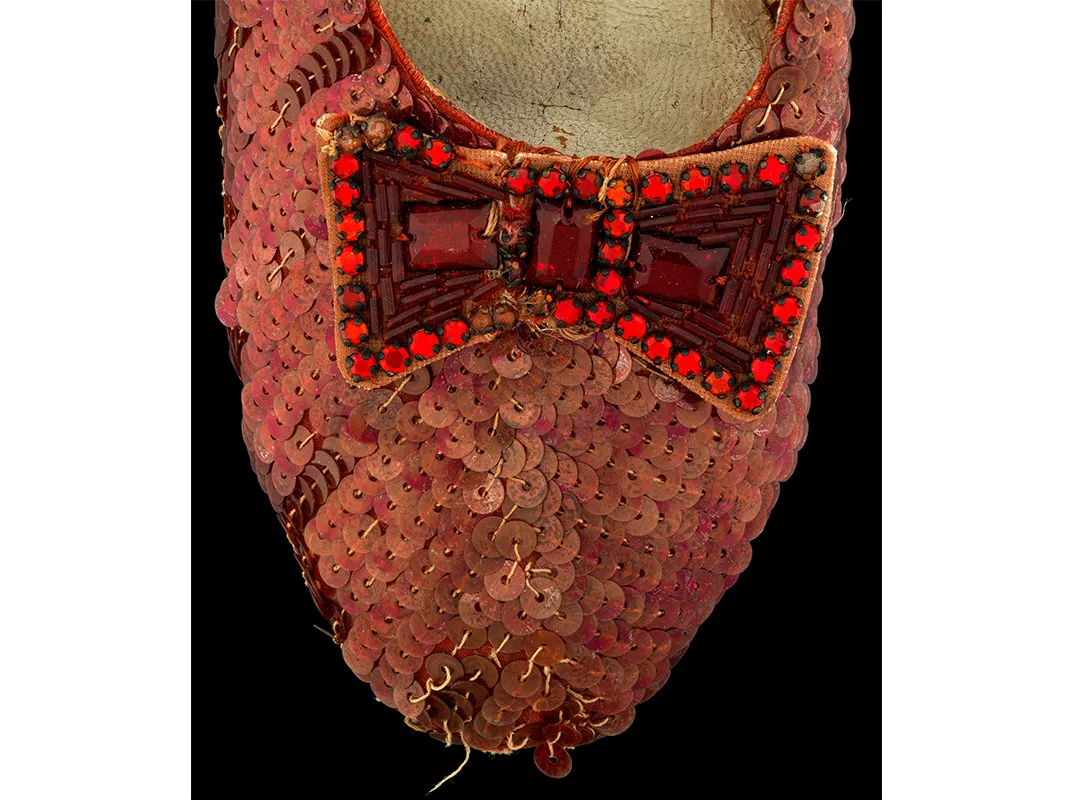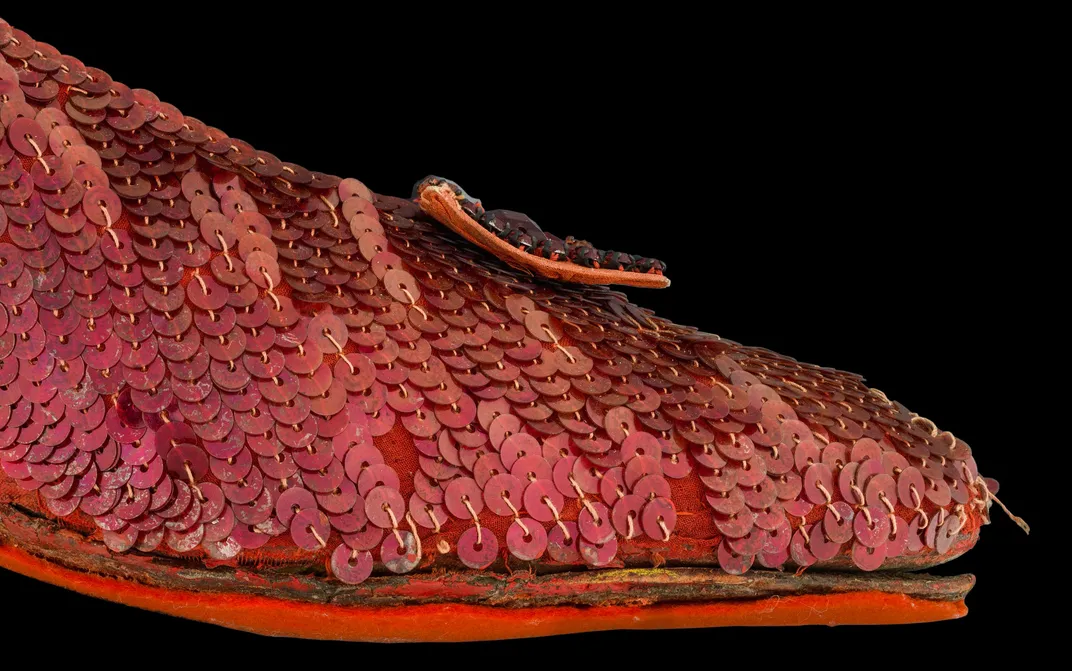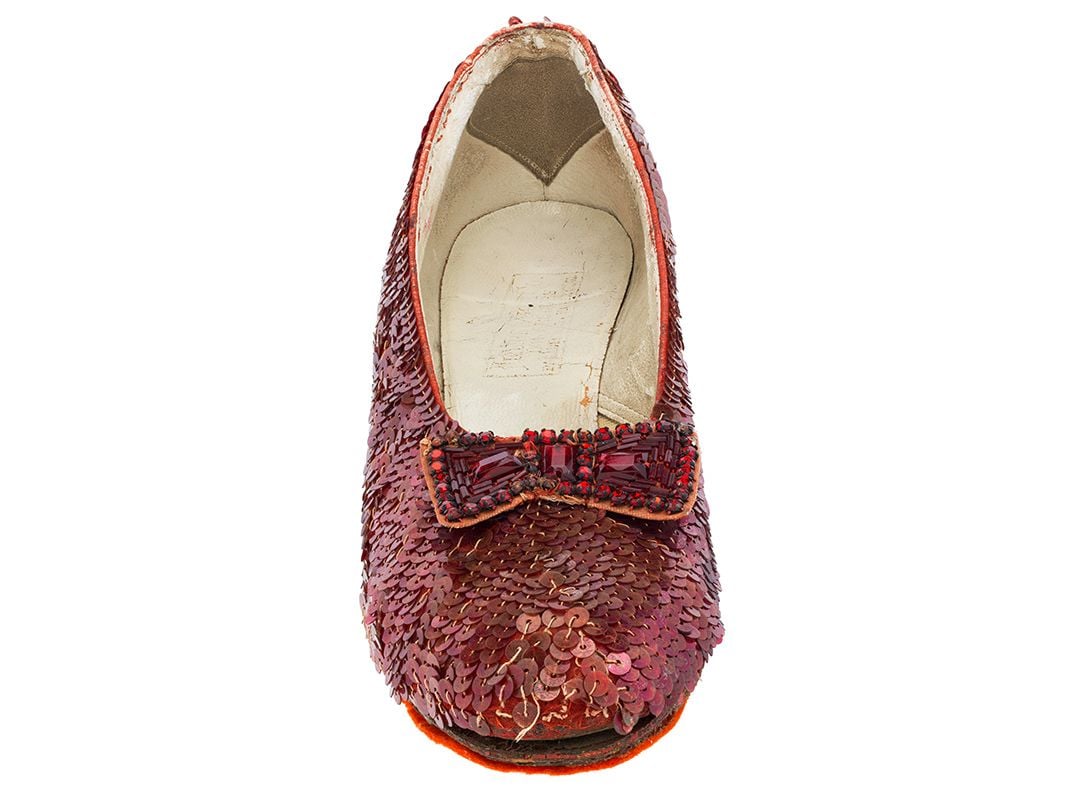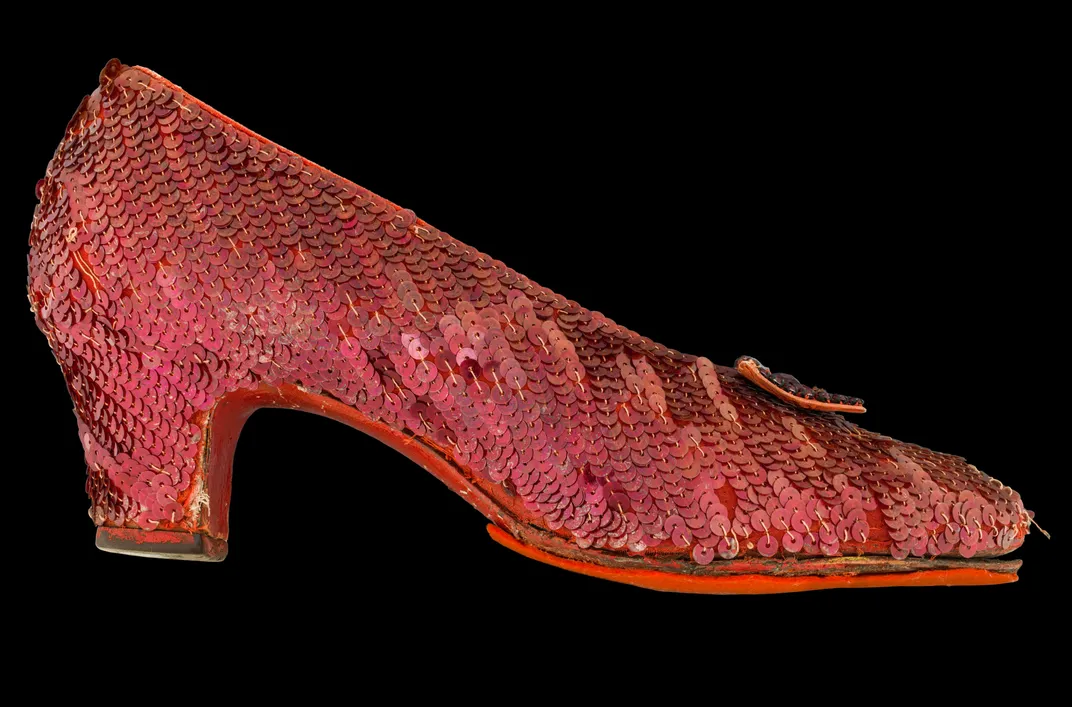How Dorothy’s Ruby Slippers Came to the Smithsonian
A successful Kickstarter Campaign funds efforts to bring back their sparkle and keep them ruby
/https://tf-cmsv2-smithsonianmag-media.s3.amazonaws.com/filer/7d/5e/7d5e4015-db7e-46c6-a818-697ce6ee929d/nov2016_h08_phenom.jpg)
On a spring day in 1970, as MGM studios was clearing out its famous backlot property in Culver City in advance of its sale to a developer, a costumes worker named Kent Warner slipped into the deep storage on the third floor. He crept up the stairs to the lady’s character wardrobe.
On a dusty shelf, he found what he was looking for—a collection of ruby slippers that Judy Garland wore for her portrayal of Dorothy Gale for the filming of the 1939 Wizard of Oz. These were the famous shoes that only needed to be tapped three times and that touched so many hearts with their magical theme—“There’s no place like home.”
There were several sets of ruby slippers on the shelf, plus a curly-toed test pair. Warner had been told to destroy all but one. The single remaining pair were to be offered for sale at the seminal multi-day MGM Studios auction, where 350,000 costumes were to be sold, including the loin cloth worn by Johnny Weissmuller in Tarzan and Gene Kelly’s sailor hat from the 1949 film On the Town.
Warner picked out a pair of ruby slippers for the sale. But on the sly, he stuffed the others in a bag and walked them off the lot.
The pair that Warner delivered to MGM for the auction sold for an astounding $15,000 to an anonymous buyer, who donated them to the Smithsonian Institution nine years later.
Today, we know that the Smithsonian’s Ruby Slippers are a mismatched pair, with a half-size difference. To the critical eye, they’re almost underwhelming. Under low lights and displayed on a mock yellow-brick road carpet, the roughly 2,400 cellulose nitrate sequins sewn onto the heels are a duller shade of red than you might expect, and the bows are slightly different.
But the millions of visitors that come to the National Museum of American History annually to stand transfixed before them—smudges on the heavy glass vitrine must be routinely cleaned—seem not to notice that age is taking its toll.
Dawn Wallace, the objects conservator who cares for the slippers, says that the delicate threads—frayed a little on the right toe—and the imperfections that betray a human touch are part of the appeal.
Earlier this year, the museum launched a Kickstarter campaign to clean and study the fragile sequins, and build a custom state-of-the-art case to preserve the shoes. A similar crowdsourcing project last August raised $719,779 to pay for the conservation costs of Neil Armstrong’s 1969 Apollo 11 spacesuit and the suit worn by Alan Shepard during the 1961 Mercury flight. (Among the rewards for contributions is a signed poster by Broadway costume designer William Ivey Long and a hand-sewn replica pair of the slippers by bead artist Randy Struthers.)
The ruby slippers are, of course, one of the most iconic relics of the golden age of Hollywood.
“They’re a portal—a promise that you can click your heels and go home,” says Morgan White, the director of the acclaimed 2016 documentary, The Slippers that premiered at this year’s South By Southwest Conference in Austin, Texas.
The ruby slippers that Kent Warner lifted were just one of thousands of pieces he rescued—or stole—from trash bins and off racks.
From The Wizard of Oz film, he carried off Dorothy’s signature blue gingham dress, as well as a sepia-toned iteration that was used for the scenes before the film burst into Technicolor. But he also carried off dresses worn by Marilyn Monroe, Fred Astaire’s shoes, even—allegedly—Humphrey Bogart’s trench coat from Casablanca.
“He recognized Hollywood’s history before anyone in Hollywood really did,” says Rhys Thomas, the reporter who discovered Warner’s story and author of The Ruby Slippers of Oz, the 1989 account of where the other ruby slippers skipped to after Warner took them.
Of course, Warner’s motives were not always altruistic. He often saved items by selling them off. In doing so, he is credited with launching the lucrative, somewhat shady aftermarket for Hollywood memorabilia. But a pair of Ruby Slippers that he kept for himself—the best pair—was his crown jewel.
But what happened to the others?
Before the auction, MGM gave one away as second prize in a 1940 contest to name the ten best movies of 1939. Roberta Jeffries, a high school junior in Memphis, Tennessee, won them and didn’t think much of it until she read about the 1970 auction, though she had shown the shoes at libraries and schools. When she came forward to verify that her pair was bona fide, she caused a huge stir—most people didn’t know there was more than one pair. "It was real exciting," she told Thomas in 1988, in an article for the L.A. Times. "I called the paper right away and said, 'I have a pair of the ruby red slippers' and that's when all the commotion started."
She sold them in 1988 for $165,000, and a private collector owns them now.
Another pair was stolen while on loan to the Judy Garland Museum in Grand Rapids, Minnesota, in 2005 and disappeared. Police searched the surrounding area, even diving into nearby Tioga Mine Pit Lake on the hunch that they may have been chucked in the water after the crime, but found nothing. A $1 million reward was offered. FBI agents recoverd that pair in 2018.
Read about how conservators at the Smithsonian's National Museum of American History helped the FBI
Warner parted with his pair in 1981 for just $12,000 to an anonymous buyer. He was one of the first men on the west coast diagnosed with AIDS, and he was struggling to pay his medical bills. He died in 1984.
But the shoes, at last, will get the kind of celebration he always wanted for them.
His pair were sold to Leonardo DiCaprio and Steven Spielberg in 2012, to be displayed at the Academy Museum of Motion Pictures, which opens in 2018 in Los Angeles.
The 80-year-old Ruby Slippers at the Smithsonian have since become one of the most popular and treasured of its artifacts. It’s an ending that would have pleased the man who saved them, says Morgan White. “Kent was the man behind the curtain.”
UPDATE: 12/15/2016: Following the success of the Kickstarter Campaign, changes were made to this article.
UPDATE: 10/24/2016: Just before midnight on October 23, after only seven days, the National Museum of American History announced that its goal of $300,000 on its first Kickstarter Campaign had been met. More than 5,300 financial backers stepped up with small donations from between $25 and $7,000 to help the museum's conservators restore the Ruby Slippers worn by Judy Garland in her role as Dorothy Gale in 1939 movie classic, The Wizard of Oz. Dubbed #KeepThemRuby, the campaign now has another 23 days to go; and the museum will announce later today its stretch goal, suggesting that another character that journeyed down the Yellow Brick Road in the popular film will be its next focus. Brains, courage or heart? But of course, one only needs not much of a brain to guess; given which of the three costumes the museum holds in its collections. —Ed
The National Museum of American History invites donations with a goal of $300,000 to protect the Ruby Slippers from environmental harm and to slow deterioration. Funds will also be used to build a state-of-the-art display case for the famous shoes. Donations can be made at the museum's Kickstarter page through November 16, 2016.






